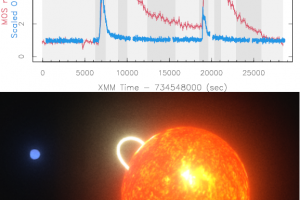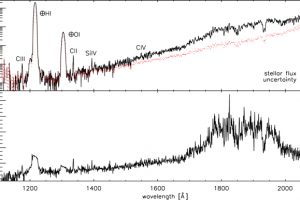Plasma ad alta temperatura nelle stelle solari e di piccola massa. L’articolo: “Empirical prediction of plasma emission measure distributions and X-EUV spectra of late-type stars” di A. Maggio (INAF-OAPA) pubblicato su The Astrophysical Journal

Misurata la quantità di plasma tra 10000 e 30 milioni di gradi, responsabile dell’emissione di raggi UV estremi e raggi X a bassa energia, in un campione di stelle di tipo solare e a bassa massa. Le stelle di tipo solare (classi spettrali F, G, o K) e quelle di piccola massa (classe spettrale M) ospitano nella loro atmosfera
» Read more


